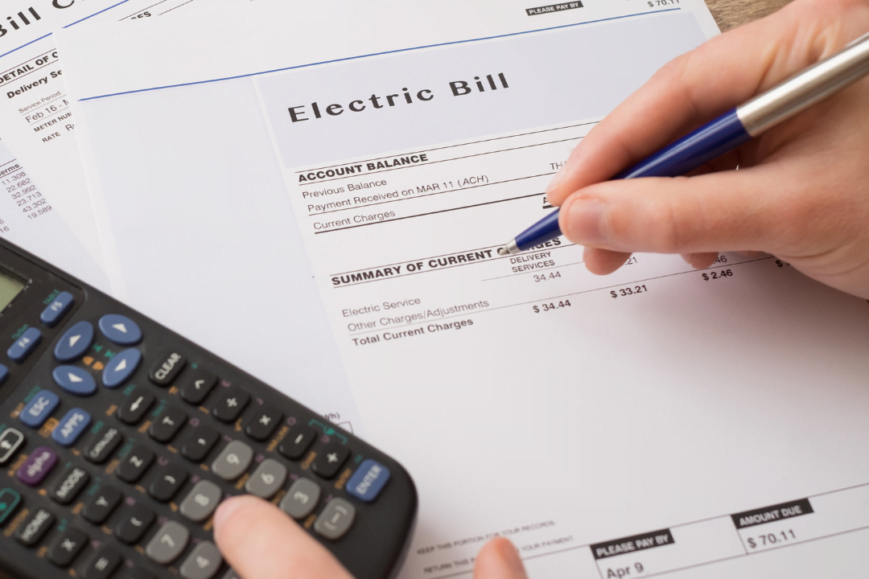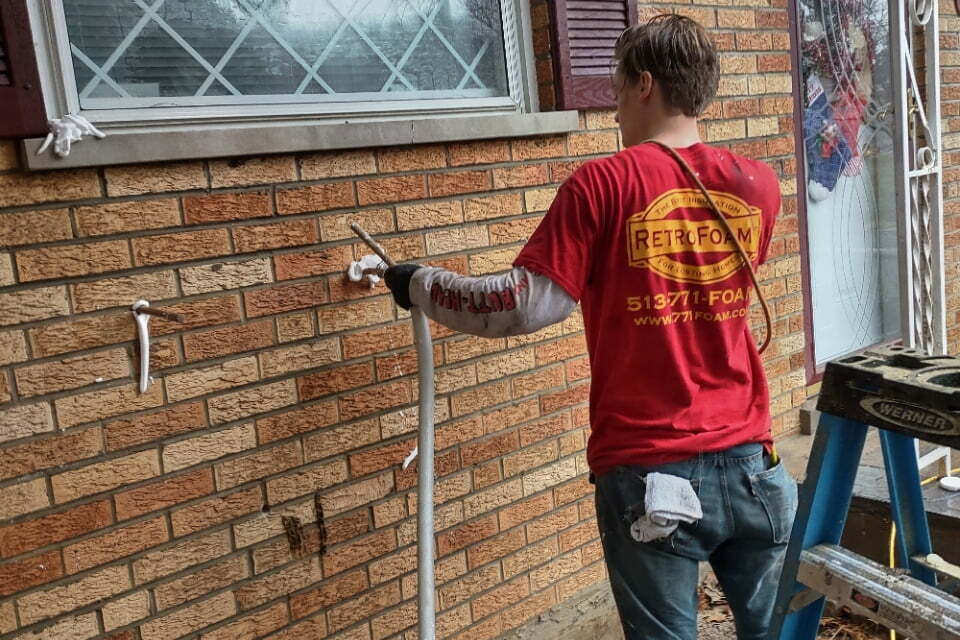If you’re looking to insulate your home to make it more energy efficient, injection foam insulation is an excellent option to consider. But like most home improvement projects, the cost can vary quite a bit based on the specifics of your house.
The best way to determine the cost of injection foam insulation is to request quotes from insulation companies. However, there are some factors to consider that impact the final cost.
What is Injection Foam Insulation?
Before diving into costs, let’s start with a quick overview of exactly what injection foam insulation is. Injection foam insulation is injected into walls via pressurized hoses and equipment. The foam then fills every nook and cranny before hardening in place.
Compared to traditional insulation, injection foam insulation has some major advantages:
- Higher R-value Per Inch: Injection foam insulation provides an R-value of R-4.6 to R-5 per inch compared to fiberglass batts at only R-3.5 per inch. This means less thickness is needed to achieve the desired insulation levels.
- Air Sealing: Foam insulation adheres to all surfaces, eliminating gaps and leaks. This improves energy efficiency and indoor air quality.
- Covers Irregular Shapes: Foam can fit the unique contours of rim joists, vaulted ceilings, old homes with uneven cavities, and more. Batts are difficult to install correctly in these areas.
- Lowers Monthly Energy Bills: Because injection foam insulation does a superior job of preventing drafts and air leaks, it helps reduce monthly HVAC costs. Homeowners will quickly reap the benefits of this insulation thanks to these energy savings.
- Keeps Out Pests: Injection foam can help prevent pests and bugs from getting inside thanks to its air-sealing qualities. Because it fills spaces seamlessly, pests cannot find cracks or gaps to get into and infiltrate your home.
Foam insulation provides powerful thermal and air-sealing qualities. But how much will it cost for your project? Let’s take a look at the key factors that influence pricing.
Factors That Impact Injection Foam Insulation Costs
Many variables play into how much you’ll pay to have foam insulation injected into your home. Here are some of the main factors that will determine the total cost.
Location
Like all construction and trade work, location plays a major role in insulation cost. In areas with higher labor and material costs, injection foam insulation will be pricier.
Within your area, differences in the cost of living between major metro areas versus rural areas can also impact the price. Be sure to get quotes from local insulators to get an accurate picture of costs.
House Size
Larger homes require more foam insulation which drives up the total cost. Most estimates are calculated based on the square footage to be insulated. A 5,000-square-foot home could cost double or more compared to a 2,500-square-foot home using the same type of foam.
Accessibility
Whether installers will inject into open cavities or closed walls makes a significant difference in labor time and preparation needed and therefore cost. Filling open wall cavities in new construction or renovations is far quicker and easier than injecting through closed-up walls in a finished home.
Accessing finished walls or dense packed blown-in insulation may require extra labor to cut openings and repair afterward.
Multi-Level Homes
Insulating a multi-story home costs more than a single-level home of the same square footage. Going up and down stairs or ladders with hoses and equipment and setting up on multiple floors takes longer, which can increase labor costs.
Minor repairs are typically included but expect an upcharge for extensive finish work after the injections are complete.
HVAC Modifications
Upgrades to HVAC equipment are sometimes needed, along with new foam insulation to maintain proper temperatures and airflow. Your HVAC load will be significantly reduced, so systems need to be re-balanced by:
- Adjusting ductwork, such as resizing, sealing, and insulating ducts.
- Upsizing air handlers or fans to compensate for added resistance from foam.
- Modifying thermostat settings and zones.
Note that HVAC modifications may need to be done by your HVAC contractor, not an insulation company. So, you may need to request a separate quote for these services.
Additional Cost Considerations
Preparation Work
Any repairs or prep work must be completed before foam injections begin for safety and proper application. Typical preparation costs include:
- Removing existing insulation if densely packed.
- Electrical safety checks and temporary light fixtures.
- HVAC and plumbing shut-offs.
- Building containment enclosures if needed.
- Repairing water damage, rot, or other issues.
Proper prep work protects your home and allows the foam insulation to perform correctly. A professional insulation company will prepare your space to protect it throughout the process.
Engineering Assessment
For larger insulation jobs, a third-party engineering assessment helps determine the optimal insulation thickness and locations to balance energy efficiency with proper vapor movement and ventilation. While some insulation companies may provide this, it’s essential to inquire about it beforehand so you know if you need to find another company for assessment.
How Do I Save on Injection Foam Insulation?
While injection foam is an investment, you can offset some of the upfront cost through:
- Energy Efficient Mortgages (EEMs): Special financing that adds energy upgrades to your mortgage by increasing the principal. The projected utility savings help to offset the higher monthly payment.
- Tax Credits: Federal tax credits are often available for injection foam. RetroFoam insulation is eligible for up to a $1200 tax credit through the Inflation Reduction Act of 2022. Find more details here, and always remember to consult your tax professional for the latest developments.
Every dollar saved through incentives and smart budgeting goes toward making your home warmer, quieter, and more energy-efficient for years to come.
Questions to Ask Your Injection Foam Insulation Contractor
As with any home improvement project, it’s crucial to vet any company or contractor thoroughly before hiring them. Ask these questions to choose the best installer for your insulation needs:
- Are you insured and bonded to perform insulation work?
- Are your foam installers experienced professionals who are certified?
- Do you provide references from past injection foam projects completed successfully?
- What steps will you take to air seal and prep the areas for insulation first?
- How long after installation will the foam cure and dry fully?
- Do you provide a warranty for both labor and materials? For how long?
- Exactly what is included in the quote pricing, and what could cause this to change?
A reputable insulation contractor will happily answer all questions and provide documentation of licenses, training, certifications, and satisfied customers. This homework protects you and ensures your project gets completed properly.
The Bottom Line on Injection Foam Insulation Costs
As we’ve demonstrated, the costs for injection foam insulation can vary quite a bit based on the type of foam used, the total square footage insulated, your location, special prep work required, and other factors unique to your home.
Here are key takeaways on estimating your costs accurately:
- Get multiple quotes from qualified local contractors for the most accurate price.
- Calculate the square footage of all spaces needing insulation.
- Inspect any accessibility issues that may increase labor time.
- Discuss the special prep work required and who provides this.
- Ask about additional expenses like HVAC modifications.
- Take advantage of available energy tax credits and rebates.
With smart planning and budgeting, you can make injection foam insulation an affordable investment that pays dividends through utility savings and home comfort for years to come.
Insulate Your Home with Cincinnati RetroFoam
Since 2015, Cincinnati RetroFoam has provided superior insulation services that aren’t offered elsewhere. If you’re looking to insulate with injection foam or you want to explore other insulation types, we are your trusted guide. In addition to injection foam, we offer blown-in and spray foam insulation. We work on existing homes, new construction, pole barns, and commercial properties. Let us help you insulate your space to provide years of lasting comfort. Contact us today for your free quote.
Frequently Asked Questions
Is insulating exterior walls with foam worth the cost?
Foam insulating exterior walls does cost more than fiberglass but pays off through higher R-value, air sealing, and reduced air leakage. In cold climates, the added benefits of injection foam are well worth the investment for exterior walls.
Can I install spray foam insulation myself?
No, injection foam materials can not be purchased and require a certified dealer to perform the work..
How messy is the injection foam insulation process?
Some overspray and dust from drilling access points are expected, but experienced installers contain this with plastic sheeting and do a final cleaning. The injection process itself is minimally invasive through small holes patched afterward.
Should I get quotes from national or local foam insulation companies?
Local small companies often offer better pricing and service than large national franchises. They know the local building codes and climate considerations too.


